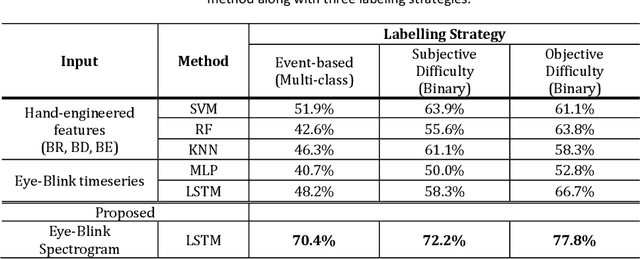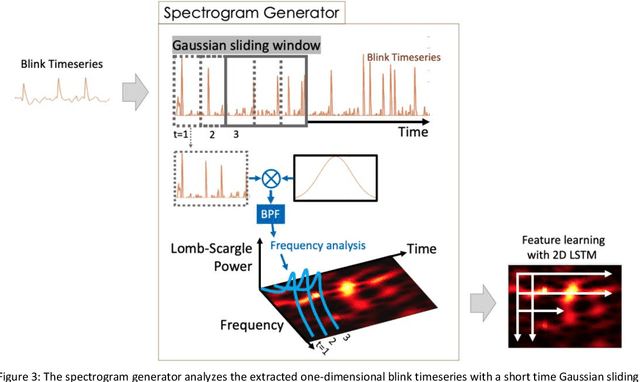Rethinking Eye-blink: Assessing Task Difficulty through Physiological Representation of Spontaneous Blinking
Paper and Code
Feb 12, 2021



Continuous assessment of task difficulty and mental workload is essential in improving the usability and accessibility of interactive systems. Eye tracking data has often been investigated to achieve this ability, with reports on the limited role of standard blink metrics. Here, we propose a new approach to the analysis of eye-blink responses for automated estimation of task difficulty. The core module is a time-frequency representation of eye-blink, which aims to capture the richness of information reflected on blinking. In our first study, we show that this method significantly improves the sensitivity to task difficulty. We then demonstrate how to form a framework where the represented patterns are analyzed with multi-dimensional Long Short-Term Memory recurrent neural networks for their non-linear mapping onto difficulty-related parameters. This framework outperformed other methods that used hand-engineered features. This approach works with any built-in camera, without requiring specialized devices. We conclude by discussing how Rethinking Eye-blink can benefit real-world applications.
 Add to Chrome
Add to Chrome Add to Firefox
Add to Firefox Add to Edge
Add to Edge